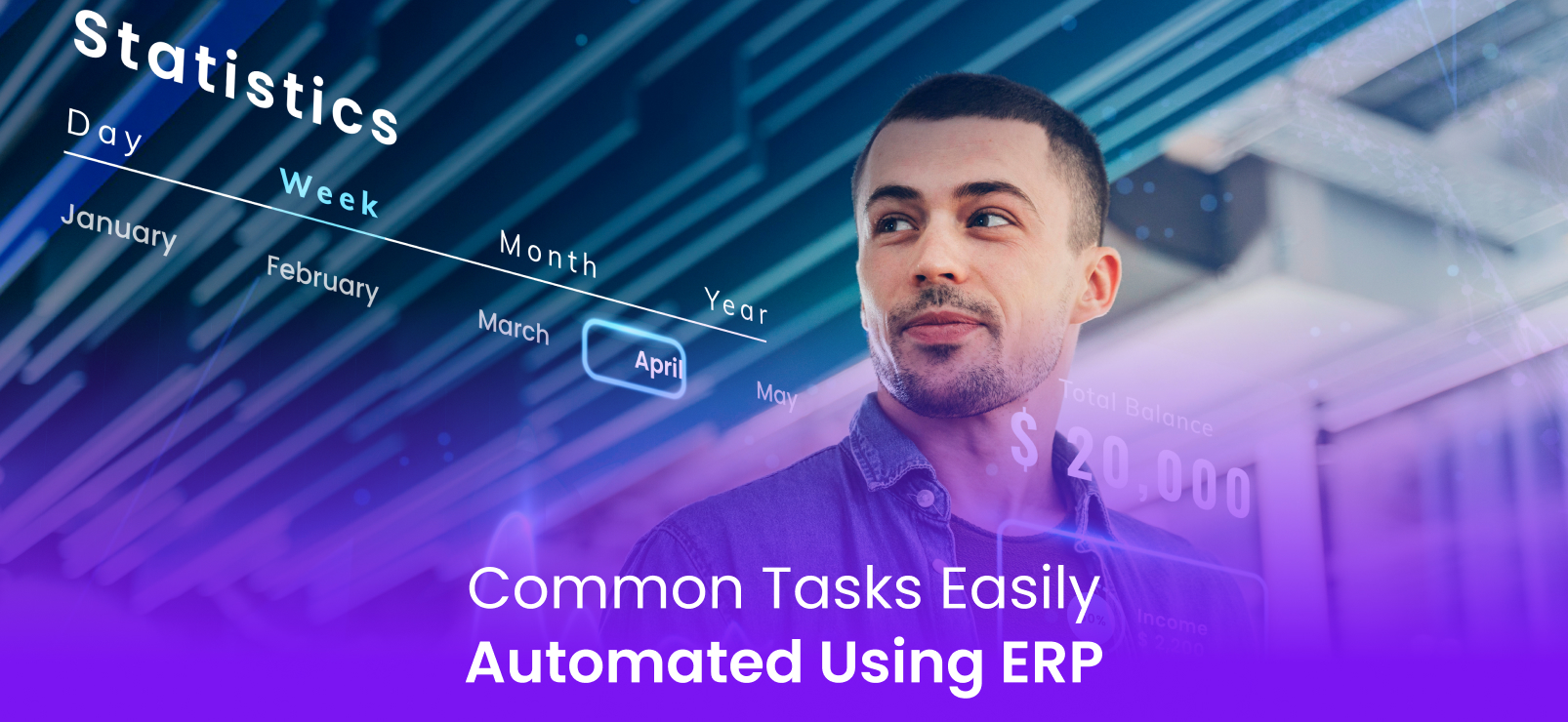5 Tasks Easily Automated With ERP
Enterprise Resource Planning (ERP) holds significant potential in today’s data-driven and digitally interconnected business landscape. Business planners and leaders could use ERP automation for numerous crucial efficiencies and business process developments.
However, none of the ERP financial systems has the same architecture. The most effective ERP automation systems save a significant amount of manual labor and human effort by eliminating only a handful of jobs and responsibilities and making them available to data governance rules.
Here are five kinds of ERP automation that could save a business a lot of work after execution. Think about all these advantages of automating and ERP functionalities when you are thinking of the benefits of automating with an ERP financial system functionality.
ERP System Workloads
ERP financial systems automate different workloads, beginning by envisioning business procedures and approval workflows, frequently using tools such as flowcharts. This mapping helps auditors and process owners comprehend how tasks progress via several steps and find challenges or inefficiencies. Through continuous auditing and workload assessment, organizations control which processes are most thoughtful and which can be efficiently automated without risk. Workloads are evaluated based on their location within the IT architecture, such as how they engage with cloud services or on-premises systems, and their suitability for automation. The goal is to accomplish a “desired state” where automation optimizes task implementation, data flow, and storage management. Automation includes the whole data lifecycle, from real-time data in transit to archival storage, ensuring the ERP system improves efficiency throughout the network, compute, and storage layers.
Financial Projecting and Planning
ERP financial solutions considerably improve budgeting and predicting accuracy by automating data entry and approval tracking. Automated workflows participation budget estimates using processes like percentage distributions, statistical averages as per the historical data, or fixed “ballpark” figures, decreasing manual errors and accelerating planning cycles. Approvals are monitored and kept within the system, delivering audit trails and accountability. Moreover, ERP systems include identity and access management to make sure that financial planners and decision-makers have permissions tailored to their roles. This limits access to crucial data and helps keep safety while strengthening stakeholders with the details they need to develop more trustworthy financial estimates and finances.
Payments Automation
Accounts payable is another crucial area advancing from ERP automation. Managing payments to vendors, suppliers, contractors, and consultants often involves handling multiple invoices and generating tax documents, tasks that could be time-consuming and prone to errors. This process is simplified by ERP systems using payment workflows automation and document creation, reducing manual effort and minimizing mistakes. They also make it easier for different departments to access and share payment information, improving transparency and overall coordination. Quicker, automated payments help clear inboxes and outboxes punctually, preventing cash flow concerns and operational blockages. This simplified approach ensures the business keeps robust vendor relationships and meets regulatory targets effectively.
Data Visualization and Reporting
Other than automation, ERP systems offer powerful data visualization and reporting tools that change complex financial data into clear, actionable business intelligence. Dashboards give leaders an all-inclusive, “bird’s-eye” view of key metrics, including payroll expenses, product development costs, accounts payable, and revenue streams. By merging historical data with forecasting models, and capital (CAPEX) and operational expenditures (OPEX), these visualizations support proactive decision-making. The capability to promptly find trends, irregularities, and possibilities strengthens finance and management teams to optimize resource allocation, enhance budgeting accuracy, and respond swiftly to market modifications. Visualization also encourages visibility across departments, promoting better communication and alignment with organizational objectives.
Expense Tracking
Tracking employee expenses is conventionally labor-demanding, given the requirement for manual review, approval, and frequent disagreements over what constitutes a reasonable business expense. ERP automation leads to predetermined business rules that could automatically flag or discard expense reports surpassing particular thresholds or falling outside policy guidelines, significantly decreasing manual workload. Expense data is also included alongside visual accounting dashboards, making it effortless for managers to comprehend spending patterns and find differences. The system’s mobile features allow managers to review and approve expenses in real time, from anywhere, no more delays waiting on paperwork or being tied to a desk. This receptive, anytime-anywhere review avoids backlogs, lessens burnout among finance teams, and ensures expense procedures keep pace with continuing business activity.
Final Thoughts
The process automation through ERP financial software could have significant advantages for companies, helping them to surpass a paperless or manual system and handle fraud or data breach issues. This way, not only it simplify the continuous process of approvals, but can help with buy-in for several types of payments, expenses, and even compliance.
Why Choose CERP Suite for ERP Automation?
CERP Suite, a global ERP expert, blends industry experience with innovative technology to deliver automation solutions personalized to your business requirements. We simplify daily tasks such as, forecasting, payments, and expense tracking, making your operations smoother and more efficient. With a robust focus on innovation, speed, and reliability,CERP Suite helps your ERP system deliver real results that drive business growth.












